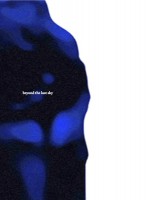Regarding the Pain of Oneself (2013)
written for the catalogue of Beyond the Last Sky exhibition
(contemporary palestinian photography and video)
The Australian Centre for Photography
curated by Chirsoula Lionis
-----
“When I began using my father’s camera I took many photos of the sky, l would lay down on the ground and take photos of the clouds’ formations while the sunlight is going through them, maybe you know this obsessive photography with sunsets and sunrises. I took so many photos until one day I gathered them all in one folder and looked at them, they -although they were different- but they all looked the same; same boring sky, clouds, and light, since then I stopped taking photos of the sky. But then The Wall arrived, and a new sky arrived with it, a new horizon that one doesn’t need to lay down to capture, a sky that stands in front of you, one that is not effected neither by sunset nor sunrise, nothing change in it except the graffiti that is drown layer over layer until one looses track of which came before which. It didn’t take me long before I lost interest, and stopped taking photos of it. What is interesting in taking photos of a concrete sky?”
“Regarding pain.” He answered when I told him that story. “Aren’t we interested in watching our pain? This physical manifestation of victimhood… Isn’t The Wall the perfect image of pain?”
He continued, while having couple of beers at Beit Aneeseh bar, that he was once driving with his mother in Bethlehem near Aida camp where The Wall is situated exactly on the edge of the road, so one ends driving beside it directly and can see nothing but it. He told me that he looked outside from the window on the side where his mother was sitting and said: “It's a huge wall, isn’t it?” “Which wall?” His mother replied… astonished he was, at this point he began laughing loudly, he replied: “What do you mean which wall? This wall, The Wall… “ and he pointed out… “Where?” His mother asked again. “There…” and stopped the car. His mother looked out from the window.. and said: “I cant see anything… I can’t see the wall that you are talking about!!” and here it took him couple of minutes before he calmed down of laughing, and said to me: “Exactly, I told her, this what you can’t see is The Wall...”
We kept laughing for hours.
It is funny, this sudden condition of blindness, of failing to see this huge big elephant in the room… A blindness that happens because one can see nothing but The Wall… when seeing itself becomes a kind of blindness.
But isn’t there a representational blindness too, when one can show nothing of Palestine but The Wall. I mean, when The Wall becomes the image that represents the contemporary Palestine (or as a friend said once: The Post Oslo Palestine) the one that is represented through pain and suffering instead of steadfastness and heroism.
I always thought of my friend’s mother whenever I passed by the wall, and try to do as she did, fail to see it, become blind, I don't mean that I would ignore the reality, but actually see beyond this forced oppressive reality, to emancipate the image from the scenery, the scenery that impedes our pain. In other words, it’s about seeing through imagination rather than reality, as it creates space for other possibilities for the image to be read by and produced through, other than being a representation of a “political” pain.
And here is the issue, for Palestinian pain is what is made essentially visible, therefore, we shall always fail to be political through images of pain, because we aim to be seen in pain. The image alone can’t be political if it stays fixated in the realm of documenting and proving the victimhood, in making visible what should be fought against; the pain.
Therefore, I wish I could end this piece by saying: “I never took a photo of The Wall”. Such a dramatic statement would have had more impact than the common dramatic photos of The Wall. Taking photos of The Wall that the Israelis built has become the common image of Palestine and the Palestinians, whereas the beautiful Bahai Gardens built by Palestinians in the nineteen’s century on the Karmal Mountain in Haifa are today the image of Israel. Because of this, I wish I never captured the image that they imposed on us.
But I did, I took this photo, but I hope I never show it.

 (dragged).jpg)
2.jpg)
3.jpg)